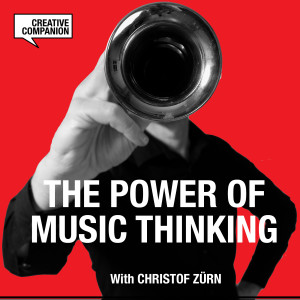15. Dede Orraca-Cecil on what it takes to build a company board and find great company leadership
Dede Orraca-Cecil is a member of Egon Zehnder, an international executive search and leadership advisory firm, where she leads efforts in almost every aspect of what a company or organization needs in leadership and governance. She talks about identifying company leadership and board building – what it takes and how the conversation has changed.
Thanks for listening!
We love our listeners! Drop us a line or give us guest suggestions here.
Links
https://www.linkedin.com/in/dede-orraca-cecil/
https://www.egonzehnder.com/office/boston/consultant/dede-orraca-cecil
Quotes
“How have recent events, including the death of George Floyd and everything that's followed, impacted how diversity and inclusion is viewed on for-profit boards?”
I would say it has had a material impact. I think going into this we have had this conversation about diversity on boards over the last few years – it is not a new one. We've seen slow progress with an initial focus on gender. But what we're seeing now is a shift where there is more comfort or directness in engaging on discussions around racial and ethnic diversity and it's not just the boardroom.
I think what we've seen since May is really a more openness and in fact, more of an expectation coming from the client around running inclusive processes. People feel more comfortable or more empowered to say: “we need to do something about the representation on our board and in our organizations and we need your help and support in doing that.”
So, the client is driving a lot of these discussions asking: “How do we focus on this? What can we do differently? How do we think about our pipeline for our board? How do we think about board readiness? These are conversations that maybe before we might've been introducing or leading with and now we have a lot of clients who are beating us to the punch and asking that before we even get to it.
Big Ideas/Thoughts
Building a High-Performing Board
You’re looking for a more colorful tapestry of experiences on a board. You want to understand not just a person's capacity, but you really understand what is it that this board is trying to solve for and what are the certain skills that will help accomplish those goals.
We're in a time where, when we say "culture fit" that can sometimes set people off on a path where you're worried about creating a homogenous environment, so I want to just clarify. We're not trying to create a board where “culture” means we all act the same, we all speak the same. In fact, what we're looking for is actually different, the underlying kind of rules engagement. How do we communicate? How do we show up? How do we create a space where you get that right level of critical thinking, creative abrasion, if you will? You want a space where people can bring themselves fully to the board, in a way that also doesn't create sharp elbows or knock others out from being able to contribute their voice.
Board searches and board work operate on a different cycle. In the best-case scenarios, you start looking for your directors with enough time and window to bring somebody on board. Not only just to find the right director candidates, but to actually spend enough time with the board itself, to get a feel for how they engage and interact.
Off-boarding board members
Nobody wants to be the bad cop. Nobody wants to off-board, especially in a scenario where they are preexisting relationships, where you've gotten to know person over time and then I think that's fine. A little tongue in cheek, but that's probably why we have a some of the work that we have. It's much easier to hire an outsider to come in and help facilitate that process than to be the ones that tell your fellow director and off board someone.
If you think about it, the board is one big team, and you really want to establish a sense of how effectively they are working together as a team. It used to be that some people would call this board assessment, the spirit of it is “how do we make sure that we're the most high performing board that we can be.” Often in those discussions or in those kinds of, engagements, it gives, the board chair a way to look across the team to see where new kind of capabilities could come in and, and where maybe some contributions are not as valuable.
“Why would a company pay six figures to find a board member? You know most boards believe that through their own networks, they can identify and recruit board members. How do you answer that question? What's the value proposition?”
We've seen an era where bad performance at the company level cannot just take down a company, but an entire industry, it makes you take a step back to think about the roles and responsibilities of boards. That has led to a shift in the nature and seriousness around board composition and responsibility and duties. What competencies do we want to look for? What skill sets are we looking for? And how can we actually create more diverse and inclusive representation on the board as well? These are areas that are complex and it's hard to necessarily just rely on your own network. Going to a firm like ours or the others, allows you to tackle those efforts with reinforcements.
Diversity Pipeline
“Raza and I have had conversations that for a while people used the lack of pipeline as maybe an excuse for not actually being as aggressive in diversity as they might otherwise be and in the conversations we've had in the last couple of months, it feels like that just isn't going to fly anymore. That's really, it's really just not a valid, like no one buys that excuse anymore.”
You can't say, well, I don't know where they are. Or they don't exist, you know, we do exist. We are here and people's willingness to rely on some of that old complacency isn't there really anymore and the across the ecosystem. Each of us is being challenged around norms that we used to assume or accept. One of those things being the pipeline. What does that mean and how does that shift the work?
It can shift the work in a few different ways. When some says they can’t find somebody I ask - is it true that you can't find anybody? Well, it depends on what the spec is. It depends on what we're looking for and how we're defining a director's experiences in each event. If you were to say, well, we only want a sitting CEO of a Fortune 50, well, of course that pipeline going to look very different. Do you then rely on that very specific spec and say, well, we tried, but the pipeline is different? Or do you think about what's underlying that request? What are the true needs of the board.
Is it important to have a Fortune 50 CEO? Or are you actually looking for something else in that executive to contribute to the board. If we go there, we can actually move the spec a bit further and give ourselves room actually build a more robust and diverse pipeline.
What are the new models of leadership that you're exploring, what does that refer to?
If you look at how the world has changed, we’ve seen greater convergence around sectors. Often if you're leading a large institution, you're thinking about your employees, you're thinking about your consumers, but you're also thinking about governments and you are thinking about civil society. When you're looking at new models of leadership, it’s how do you actually engage across those things? How fluid are you as a senior executive moving from the public to the private, how facile are you in terms of engaging with heads of state and not just your consumer base.
Then there's that other piece that we alluded to earlier, which is this notion of moving beyond thinking about shareholder value and really this concept of stakeholder capitalism. What does that require of a leader? How adaptive are you? How are you looking at the individual?
More Episodes
All Episodes>>Create Your Podcast In Minutes
- Full-featured podcast site
- Unlimited storage and bandwidth
- Comprehensive podcast stats
- Distribute to Apple Podcasts, Spotify, and more
- Make money with your podcast












